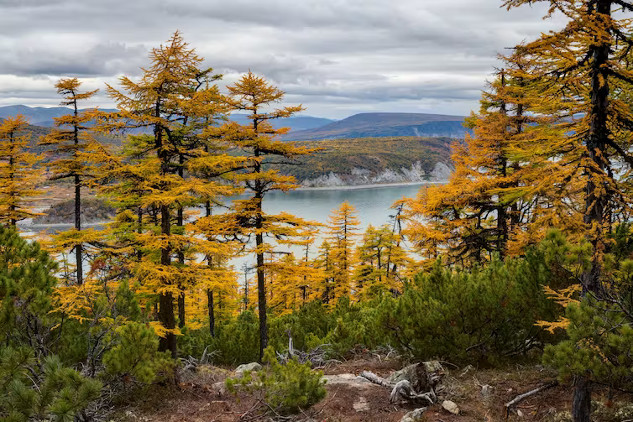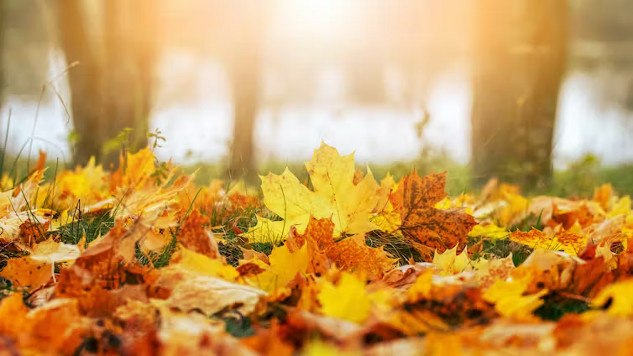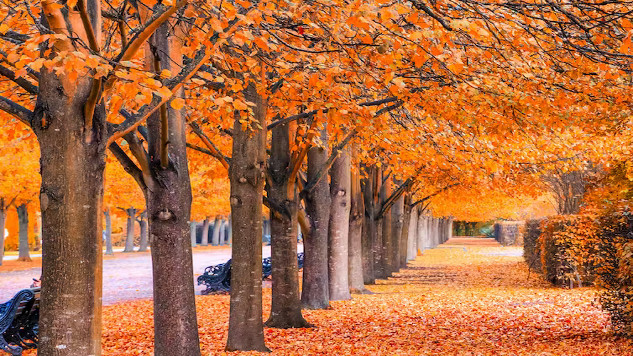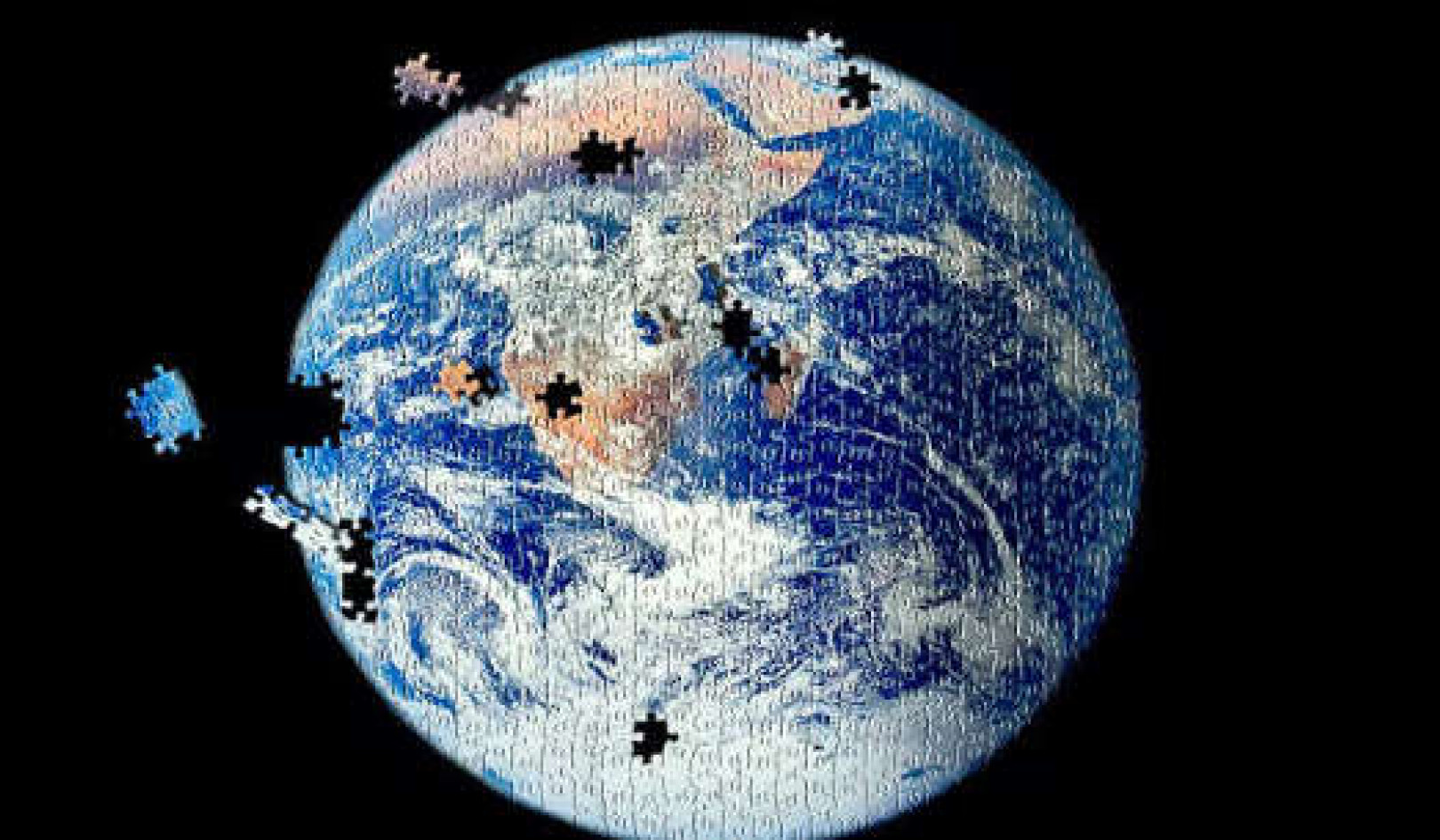Autumn has finally arrived in the UK following an unusually sunny September. The days are growing shorter, the temperature cooler, and the leaves are changing colour.
The delayed onset of autumn in 2023 is not a one off. It’s actually part of a broader trend in which the shift from summer to winter is happening later in the year. My own research that I’ve carried out over the past 13 years points towards climate change as the likely culprit.
One of the most noticeable effects of climate change is the changing patterns of vegetation seasonality around us. This includes the timing of important biological events such as bud burst, the appearance of the first leaves, flowering and leaf fall.
In general, the appearance of the first leaf marks the arrival of spring, while leaf fall signals the beginning of autumn. The timing of these events is changing, particularly in the northern hemisphere, where spring appears to be starting earlier and autumn’s onset is being delayed.
Traditionally, monitoring vegetation seasonality involved meticulously documenting these seasonal events year after year. The earliest records of spring events in the UK date back to 1736, when naturalist Robert Marsham began recording the timing of spring events in Norwich, England.
Today, satellite data has become an essential tool for tracking changes in vegetation seasonality. This data can be used to estimate vegetation vigour (an indicator of vegetation’s condition, strength and lushness). Changes can then be used to identify the start and end of each growing season.
Longer growing seasons
Climate researchers now have nearly five decades of satellite observations at their disposal. Analysis of this data reveals that spring has advanced by approximately 15 days, while autumn has been delayed by a similar amount. The overall outcome has been the extension of the growing season by an entire month over the past three decades.
The shift in the timing of the seasons is particularly pronounced at higher latitudes. Vegetation situated more than 55° north of the equator, such as in the larch forests of northern Russia, has shown a trend towards an extended growing season, increasing by up to one day per year.
A longer growing season is not necessarily a bad thing. It means a longer period of photosynthesis, which theoretically could boost net carbon uptake – although there is no concrete evidence for this yet.
But an earlier onset of the growing season exposes plants to the risk of damage from spring frosts and an increased vulnerability to summer drought. Research has found that an early spring in central and northern Europe in 2018 promoted increased vegetation growth. This, in turn, contributed to soil losing its moisture quickly, amplifying summer drought conditions.

The shift in the timing of the seasons is particularly pronounced at higher latitudes. Andrei Stepanov/Shutterstock
Role of climate change
Temperature is one of the primary factors influencing vegetation growth at high northerly latitudes. So, an earlier onset of spring and a later arrival of autumn are probably driven by the rising global mean temperature. Since 1981, the global mean temperature has increased by 0.18°C per decade.
Nonetheless, the influence of temperature on the duration of the growing season may change depending on the type of vegetation. In ecosystems primarily dominated by forests, a warmer climate can lead to more photosynthesis and increased vegetation productivity.
On the other hand, in a warmer climate, more water evaporates from the Earth’s surface, drying out the soil. This could adversely affect the growth of plants with shallow roots, such as grasses and herbaceous plants.
Another consequence of climate change is the increased frequency of droughts during the peak of the growing season. Drought conditions result in severe water stress for plants, leading to the premature shedding of leaves or a change in their colour, a phenomenon often referred to as a “false autumn”.
The UK experienced such conditions in August 2022, when there was an early leaf fall and the browning of leaves, as the country grappled with an extreme heatwave.
A longer and drier growing season can also increase the risk of forest fires. A US study from 2006 revealed a significant surge in wildfire activity within the forests of the northern Rockies from the mid-1980s. This change was closely linked to increased spring and summer temperatures and an earlier spring snowmelt.

Trees sometimes shed their leaves early when under stress. MVolodymyr/Shutterstock
Climate change is having a clear impact on vegetation growth and seasonality. But the extent and severity of its impact varies depending on the type of plant and where it grows.
The availability of satellite data spanning the past 50 years is a valuable resource for capturing changes in the duration of the vegetation growing season. This data is helping scientists quantify the scale and consequences of these changes, providing insights into how plants are responding to our warming climate.
Jadu Dash, Professor of Remote Sensing in Geography and Environmental Science, University of Southampton
This article is republished from The Conversation under a Creative Commons license. Read the original article.

Related Books:
The Future We Choose: Surviving the Climate Crisis
by Christiana Figueres and Tom Rivett-Carnac
The authors, who played key roles in the Paris Agreement on climate change, offer insights and strategies for addressing the climate crisis, including individual and collective action.
Click for more info or to order
The Uninhabitable Earth: Life After Warming
by David Wallace-Wells
This book explores the potential consequences of unchecked climate change, including mass extinction, food and water scarcity, and political instability.
Click for more info or to order
The Ministry for the Future: A Novel
by Kim Stanley Robinson
This novel imagines a near-future world grappling with the impacts of climate change and offers a vision for how society might transform to address the crisis.
Click for more info or to order
Under a White Sky: The Nature of the Future
by Elizabeth Kolbert
The author explores the human impact on the natural world, including climate change, and the potential for technological solutions to address environmental challenges.
Click for more info or to order
Drawdown: The Most Comprehensive Plan Ever Proposed to Reverse Global Warming
edited by Paul Hawken
This book presents a comprehensive plan for addressing climate change, including solutions from a range of sectors such as energy, agriculture, and transportation.






















